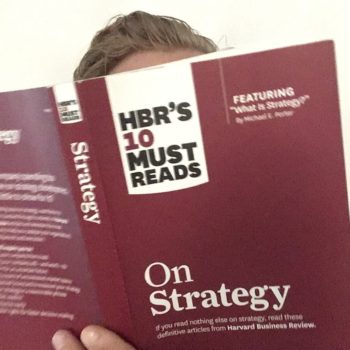How strongly do I recommend On Change Management?
6 / 10
Review of On Change Management
On Change Management is a series of Harvard Business Review essays touching on the inhibitors and resistors to organizational change. About half are worth reading. Ultimately I think your time is better spent with the book Leading Change by John Kotter but if you read this book, stick with these essays:
- Leading Change by John Kotter
- Radical Change, the Quiet Way by Debra Meyerson
- Tipping Point Leadership by W. Chan Kim and Renée Mauborgne
- The Real Reason People Won’t Change by Robert Kegan and Lisa Laskow Lahey
Top Ideas in This Book
- Change must sink deeply into culture before declaring victory
- Look for small but meaningful wins in the first 6-12 months of change to build momentum and a sense of possibility
- Find tempered radicals who quietly challenge the status quo and drive transformation
- Numbers alone will not establish a sense of urgency
- Closely compare strategy and resource allocation to identify discrepancies
- Old habits are defended by people trying to maintain or restore order
- When people attack authority, they are usually targeting the role not the person
- Competing commitments drive resistance to change
Change must sink deeply into culture before declaring victory
Leaders undermine change when they declare victory too early, thereby decreasing urgency and increasing complacency. You will know that you’ve achieved culture change when people talk about the new behaviors as “the way things are done around here.”
Look for small but meaningful wins in the first 6-12 months of change to build momentum and a sense of possibility
Not everyone will buy into your vision for change immediately. Be intentional about creating opportunities for early wins to build confidence and open the door for early naysayers to jump on the bandwagon.
Find tempered radicals who quietly challenge the status quo and drive transformation
Tempered radicals are people often outside executive roles that quietly and effectively drive change within your organization. Tempered radicals are not afraid to rock the boat and because of their proclivity for questioning the norm often make the best captains.
Numbers alone will not establish a sense of urgency
Developing a sense of urgency is the first key step in driving organizational change. At this stage, many executives simply point to the numbers and fail to convince people that change really is necessary. At this point, the organization has at best false alignment around the change initiative.
A better approach is to integrate numbers in the logical background, but rely more heavily on emotional appeal when delivering your vision for the future.
Closely compare strategy and resource allocation to identify discrepancies
Change initiatives often start as additional work for a small team. This approach works temporarily but does not scale. Quickly the new strategy becomes misaligned with actual resource allocation. Explicitly you have a new strategy but implicitly the old strategy still exists by way of funding. You must reconcile the differences and reallocate resources toward your new strategy, giving it the opportunity to take hold.
Old habits are defended by people trying to maintain or restore order
It is pointless to view the resistors of change as enemies. When you sense someone resisting change and deferring to old habits, assume they are just trying to bring order to a chaotic world. You must coach them to feel comfortable being uncomfortable. Correct old habits and help replace them with new habits that support your vision for the future.
When people attack authority, they are usually targeting the role not the person
Organizational change introduces chaos, blurring lines of responsibility and ownership. In this foggy environment leaders must appreciate that attacks against their authority are more about lack of clarity and expectations than their personhood.
Competing commitments drive resistance to change
Not only do people stick with old habits to maintain a sense of order, they stick with old habits because implicitly or explicitly they still have commitments to deliver on. Unlike your change initiative, those commitments have history and a clear path for execution. When you feel someone resisting change, look at what commitments they have to others, acknowledge them, and work collaboratively to eliminate or reduce those commitments.

